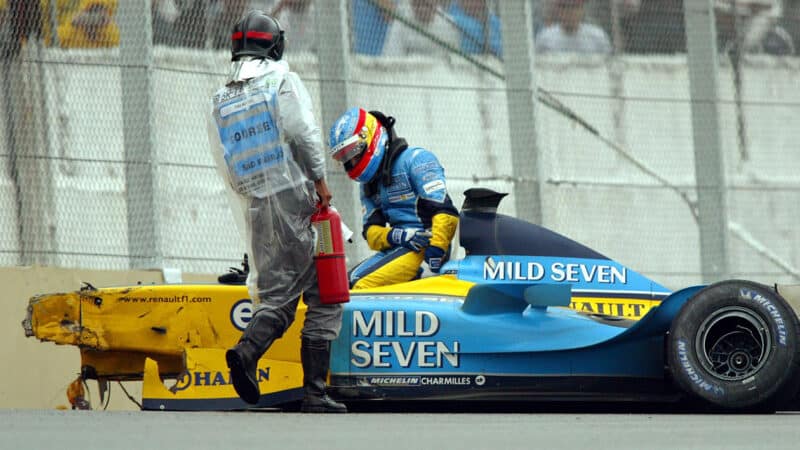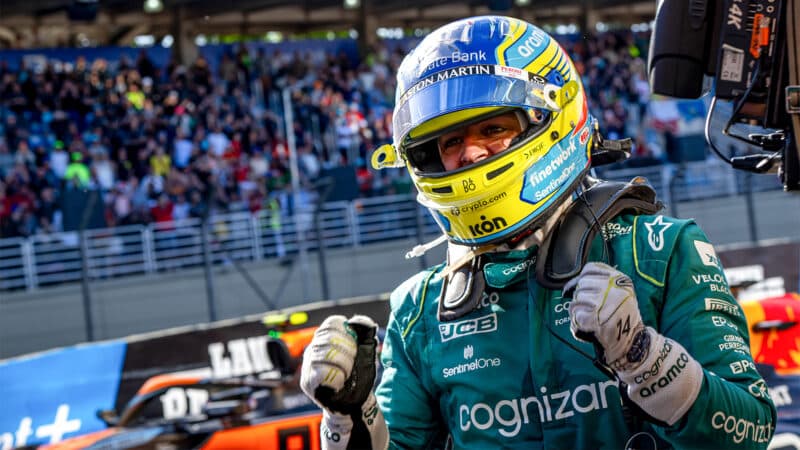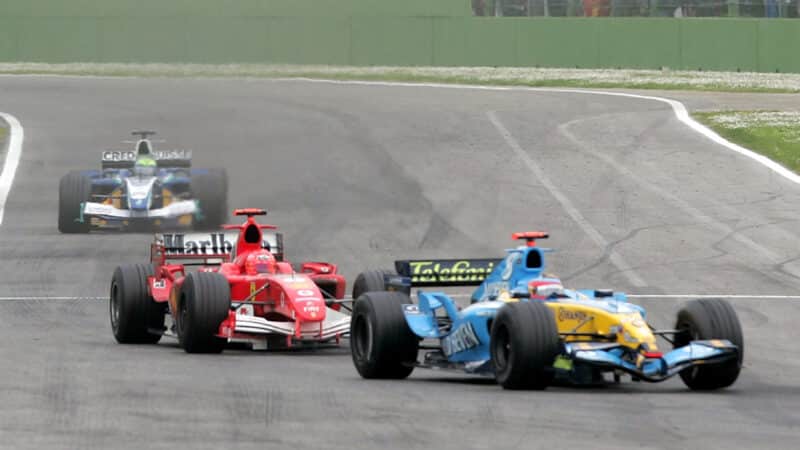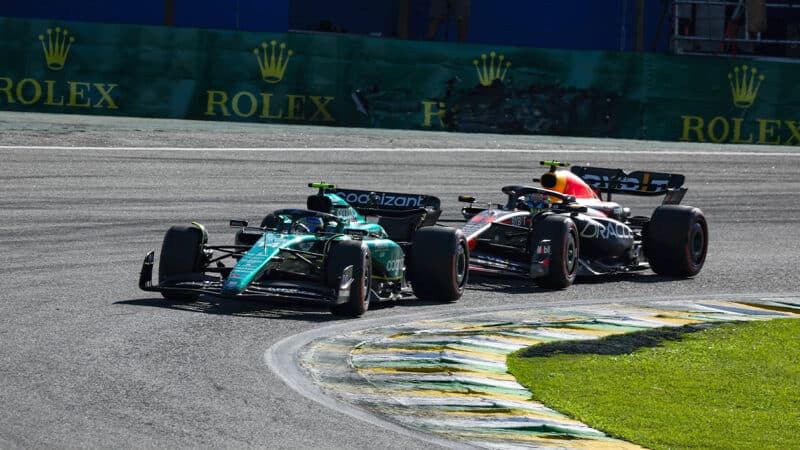Otherwise, what slows a driver is not usually age, but simply the desire, the wish to keep putting it on the line, to go wheel-to-wheel with fearless and ambitious young chargers, amid the constant grind, the years of flight-hotel-track-flight-hotel-track, media work, sponsor greeting etc. All the while trying to find ways of improving yourself, of helping the team progress.
That desire in Alonso has always marked him out. Yes, he’s super-fast, very smart and has a sixth sense of how to place his car in battle. But he’s never been the absolute fastest over a single lap, never the absolute best wet weather driver. His peaks are quite rounded ones, but are wider than anyone else’s – and he has so many of them. Desire is the outstanding quality, and it’s been there from the start. Let’s go back a couple of years even from that Imola ’05 race he was asked about, to Interlagos 2003, his second year of F1. It was his third race for Renault. Circumstances, his combativeness and the appalling weather had given him a wild ride, but he just kept bouncing back from setbacks and may well have won despite everything had he not encountered Mark Webber’s detached wheel over the brow of the hill at 170mph.

A shaken Alonso climbs from his wrecked Renault at Interlagos in 2003
Orlando Kissner/AFP via Getty Images
Starting 10th, he’d made his way up to sixth when a safety car triggered almost everyone to visit the pits for fresh tyres and a refuel. There’d been a mix up in the garage and Alonso was erroneously fitted with slicks and not the intended intermediates. Which entailed him coming in again the following lap for the correct tyres. He rejoined now 16th but in the following few laps got himself up to fourth, often the fastest man on track in the very variable conditions. He was being held up by Ralf Schumacher’s Williams as they were both caught and passed by Kimi Raikkonen’s McLaren. In the spray he didn’t see yellow flags as he then passed the Williams to set chase for Raikkonen. He was awarded a drive-through penalty for the yellow flag infringement, losing him several places, one of them to the Jordan of eventual winner Giancarlo Fisichella. Returning to the track now ninth, Alonso’s pace was extraordinary and in the space of a few laps he was up to third and catching both Raikkonen and Fisichella fast. He was too far behind to get them by the end but suddenly there was an opportunity: a safety car. He’d pulled out enough of a gap behind there was time to get him into the pits for fresh tyres, so he’d be lined up right behind the two leaders who’d be on old rubber for the restart. This was winnable and he knew it.
Instructed to pit, he was pushing hard on the in-lap (no S/C deltas back then) when he encountered the wheel from Webber’s crashed Jaguar, just before the pit entry, which bounced him violently from one wall to the next. “I had seen the yellow flags and the safety car signal,” he reported the next day, after being kept in hospital overnight for observation, “but when they show the signal there are actually yellow flags all around the track, so I wasn’t expecting a piece of car in the middle of the road.”
It couldn’t happen like that now, for there are procedures in place to guard against it. But on that day 20 years ago the circumstances offered a tantalising glimmer of victory and the desire overrode everything. That desire is more controlled now but has lost none of its intensity.





